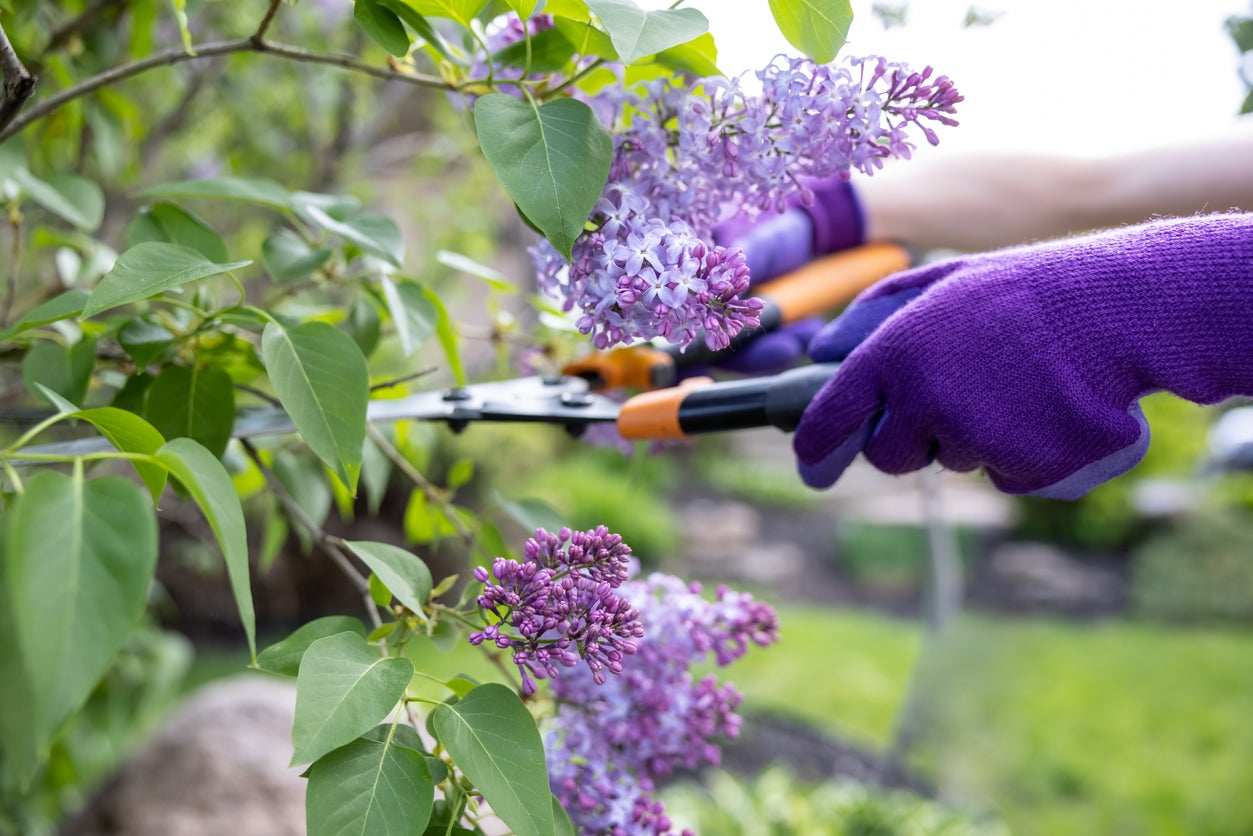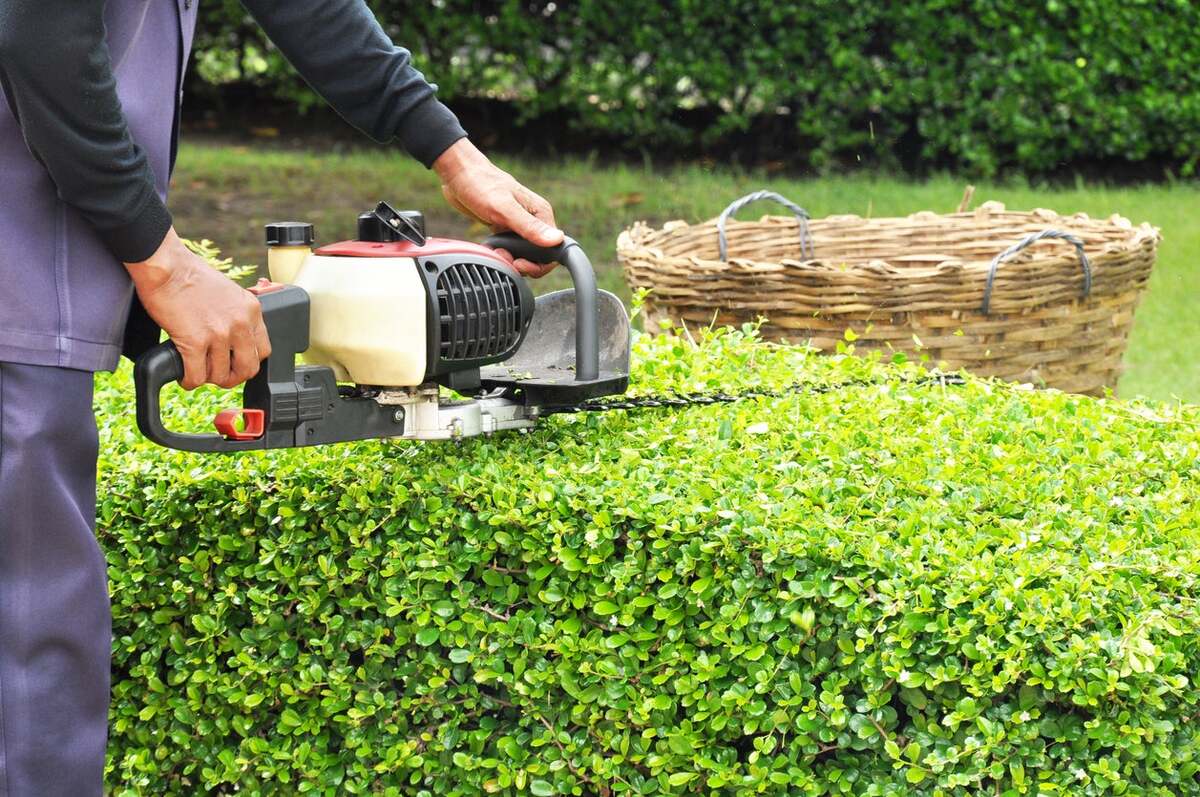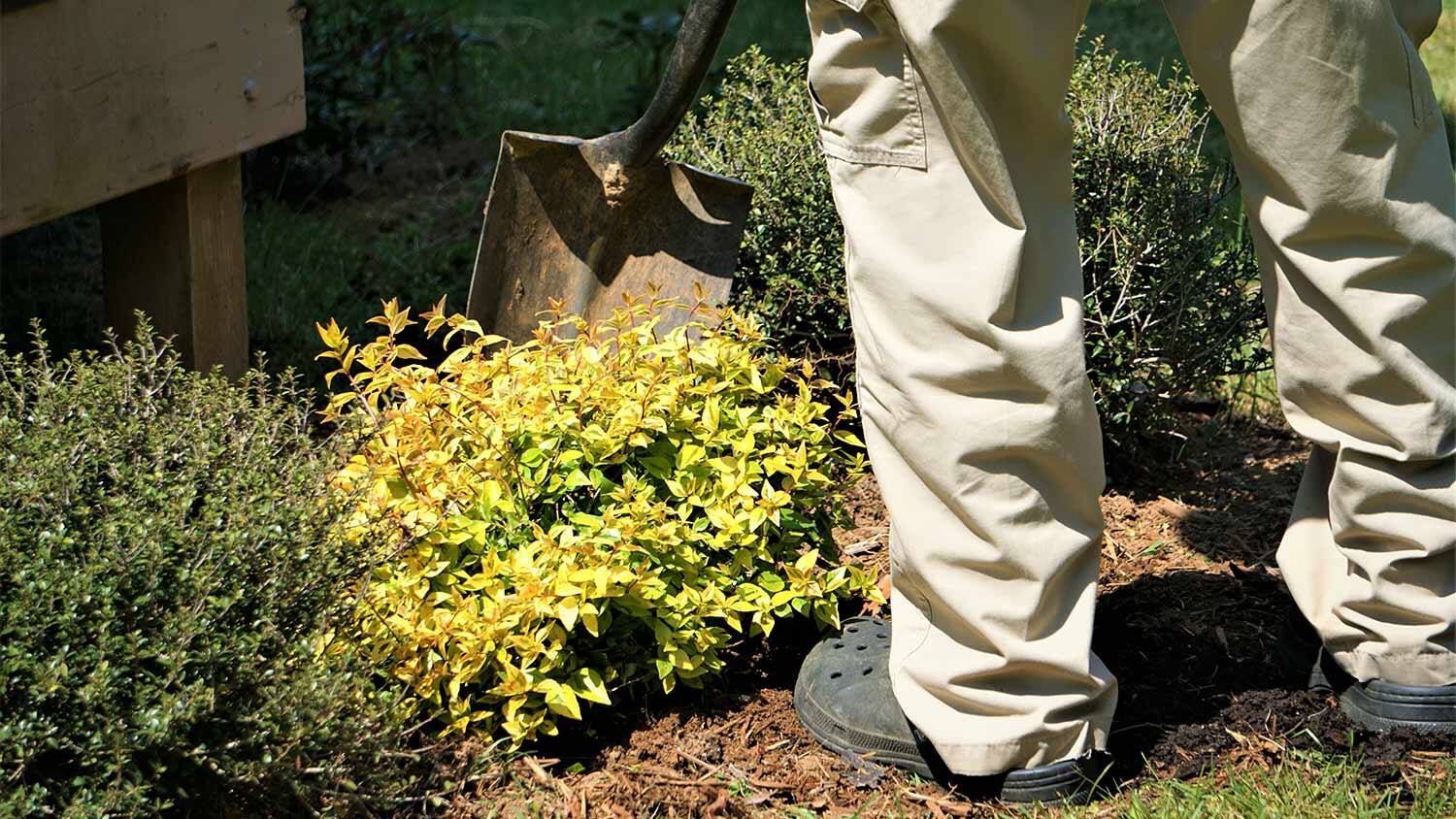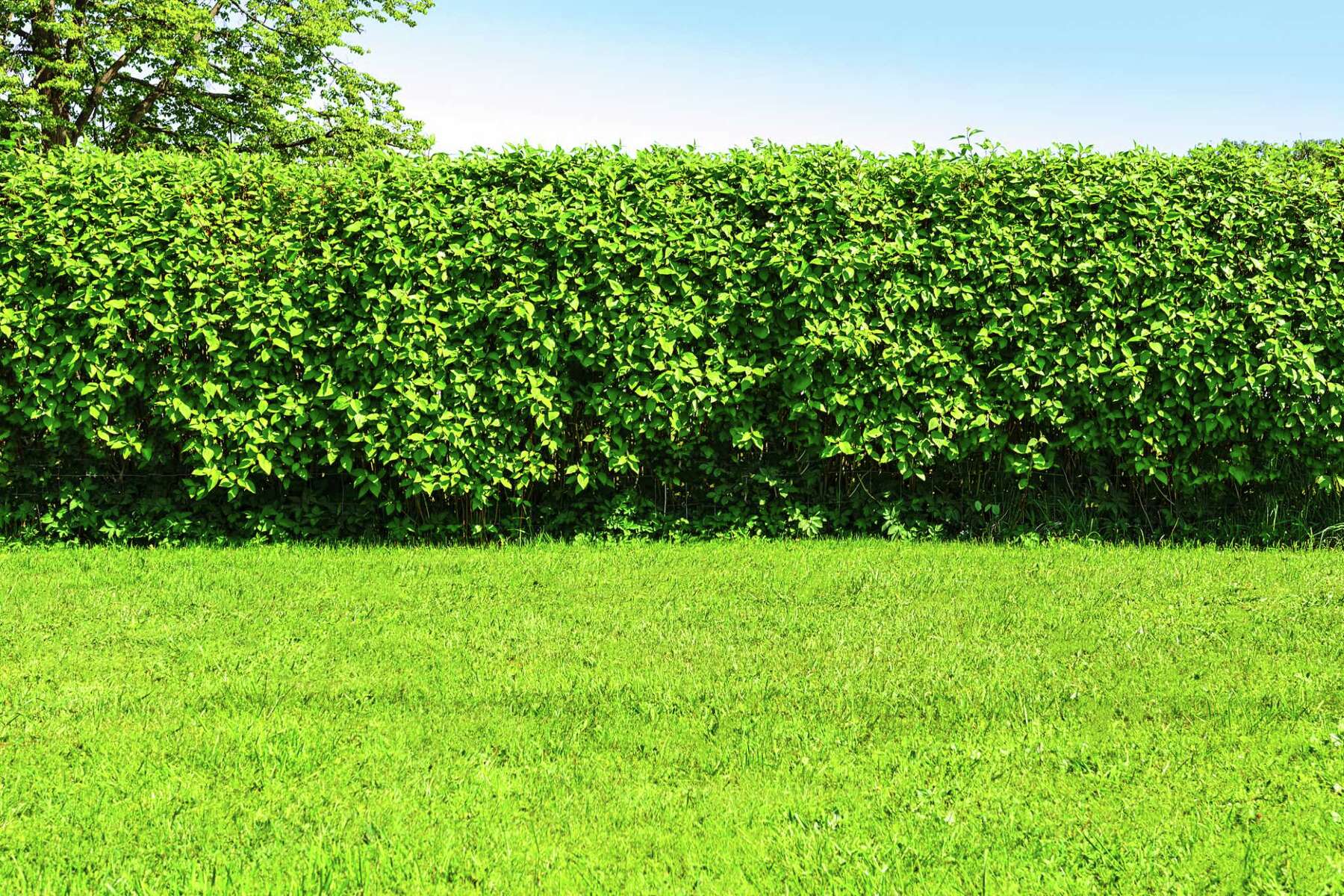Home>Garden Design>Planning Your Garden>How To Arrange Shrubs


Planning Your Garden
How To Arrange Shrubs
Modified: January 22, 2024
Discover the expert tips and tricks for planning your garden and arranging shrubs to create a stunning and organized outdoor space.
(Many of the links in this article redirect to a specific reviewed product. Your purchase of these products through affiliate links helps to generate commission for Chicagolandgardening.com, at no extra cost. Learn more)
Table of Contents
Introduction
Welcome to the exciting world of planning and arranging your garden! A well-designed garden can be a beautiful and tranquil space that brings joy and relaxation to your life. One key element in creating a stunning garden is the proper arrangement of shrubs. Shrubs not only provide structure and form to your garden, but they also add color, texture, and interest to the landscape.
Arranging shrubs strategically can transform your garden into a harmonious and inviting space. Whether you are starting from scratch or looking to revamp your existing garden, this article will guide you through the process of planning and arranging shrubs.
When it comes to selecting and placing shrubs, there are several factors to consider. The right location, the choice of shrubs, and the preparation of the soil are all crucial steps in ensuring the success of your garden. Additionally, proper planting techniques, watering, and maintenance are essential for the long-term health and vitality of the shrubs.
Throughout this article, we will explore each step in detail, providing you with the knowledge and guidance to create a stunning shrub arrangement in your garden. So, let’s dive in and discover the secrets to a beautiful and well-arranged garden!
Selecting the Right Location
Choosing the right location for your shrubs is vital to their growth and overall health. Consider the following factors when selecting the perfect spot in your garden:
- Sunlight: Most shrubs thrive in areas with full sun or partial shade. Observe the sunlight patterns in your garden throughout the day and select a location that provides the appropriate amount of sunlight for your chosen shrubs.
- Soil Drainage: Shrubs prefer well-draining soil to prevent root rot and other water-related issues. Avoid areas with poor drainage, such as low-lying spots that collect water after rain.
- Space: Consider the mature size of the shrubs you intend to plant. Ensure that there is enough space for them to spread out and grow without overcrowding other plants or structures.
- Proximity to Structures: Be mindful of nearby structures such as fences, walls, or buildings. Leave enough space between the shrubs and these structures to allow for proper air circulation and growth.
- Access to Water: Ideally, the chosen location should have easy access to a water source for regular irrigation.
By carefully considering these factors, you can create an ideal environment for your shrubs to thrive. Take the time to evaluate your garden and find the perfect location that meets these criteria.
Choosing Shrubs
Choosing the right shrubs for your garden is an important step in creating an aesthetically pleasing and functional landscape. Consider the following factors when selecting shrubs:
- Climate: Determine the hardiness zone of your area and choose shrubs that are suitable for your climate. This will ensure that the shrubs can withstand the temperature extremes and thrive in your region.
- Size: Consider the ultimate size of the shrubs when they reach maturity. Ensure that the chosen shrubs will fit well in the available space without outgrowing the area.
- Shape and Form: Decide on the desired shape and form of the shrubs. Some shrubs have a compact, rounded shape, while others have a more upright or cascading form. Choose shrubs that complement the overall style and design of your garden.
- Seasonal Interest: Select shrubs that offer year-round interest. Look for plants with beautiful blooms, colorful foliage, or interesting textures. This will ensure that your garden looks appealing in every season.
- Maintenance Requirements: Consider the level of maintenance you are willing to commit to. Some shrubs require regular pruning and care, while others are low maintenance and more tolerant of neglect.
Take your time to research different shrub varieties and visit local nurseries to see them in person. Consider consulting with gardening experts or landscape designers for guidance in selecting the best shrubs for your specific needs and preferences.
Remember, choosing the right shrubs is crucial for the success of your garden. Take into account the climate, size, shape, seasonal interest, and maintenance requirements to create a beautiful and cohesive landscape.
Preparing the Soil
Before planting your shrubs, it is essential to prepare the soil to provide a fertile foundation for their growth. Follow these steps to ensure optimal soil conditions:
- Remove Weeds: Clear the area of any existing weeds or grass. These can compete with the shrubs for nutrients and water.
- Loosen the Soil: Using a garden fork or tiller, loosen the soil to a depth of 12-18 inches. This will improve the soil’s drainage and allow the shrub’s roots to penetrate easily.
- Amend the Soil: Test the soil’s pH level and nutrient content. Based on the results, add organic matter such as compost, well-rotted manure, or peat moss to improve the soil’s structure and fertility.
- Mix in Organic Fertilizer: Incorporate a balanced slow-release organic fertilizer into the soil to provide essential nutrients for the shrubs. Follow the manufacturer’s instructions for the appropriate amount and application method.
- Level the Soil: Smooth out the soil surface to create an even foundation for planting.
By properly preparing the soil, you are setting the stage for healthy shrub growth. The loosened soil, enriched with organic matter and nutrients, will promote strong root development and overall plant vigor.
Remember to water the soil thoroughly after preparing. This will help settle the soil and ensure it is adequately moist before planting your shrubs.
Digging Holes
Properly digging the holes for your shrubs is crucial for their successful establishment. Follow these steps to ensure the holes are the right size and depth:
- Measure and Mark: Determine the appropriate spacing between your shrubs based on their mature size. Use a measuring tape and stakes to mark the desired locations for each hole.
- Size and Depth: Dig holes that are two to three times wider than the shrub’s root ball. The depth of the hole should be slightly shallower than the height of the root ball to allow for proper planting depth.
- Soil Disposal: As you dig, place the excavated soil on a tarp or in a wheelbarrow to keep the area clean and organized.
- Break up the Sides: Score the sides of the hole with a fork or shovel to break up any compacted soil. This will help the roots penetrate into the surrounding soil more easily.
- Backfill Preparation: Mix the excavated soil with compost or organic matter to enhance the soil’s fertility and provide a nutrient-rich environment for the shrub’s roots.
- Positioning the Shrub: Carefully remove the shrub from its container and gently loosen the roots if they are tightly bound. Place the shrub in the center of the hole, ensuring that it will be planted at the same depth as it was in the container or nursery.
- Backfilling: Fill the hole halfway with the prepared soil mixture. Gently firm the soil around the roots to eliminate air pockets. Then, water the hole to settle the soil and ensure good root-to-soil contact.
- Finish Backfilling: Fill the rest of the hole with the remaining soil mixture, firming it gently as you go. Avoid piling soil against the shrub’s trunk or stems.
Properly digging the holes will create a suitable environment for the shrub’s roots to establish and grow. Take your time and ensure the holes are the correct size and depth, and that the shrubs are planted at the appropriate level to promote healthy development.
Planting Shrubs
Planting shrubs properly is essential for their successful establishment and long-term health. Follow these steps to ensure your shrubs are planted correctly:
- Timing: Choose the optimal time to plant your shrubs. Ideally, plant them in the early spring or fall when the weather is cooler and there is less stress on the plants.
- Prepare the Hole: Follow the guidelines for digging the holes mentioned in the previous section, “Digging Holes.”
- Positioning: Carefully remove the shrub from its container, gently loosening the roots if they are tightly bound. Place the shrub in the center of the hole, ensuring that it will be planted at the same depth as it was in the container or nursery.
- Backfilling: Fill the hole halfway with the prepared soil mixture, gently firming the soil around the roots. Water the hole to settle the soil and ensure good root-to-soil contact.
- Finishing: Fill the rest of the hole with the remaining soil mixture, firming it gently as you go. Avoid piling soil against the shrub’s trunk or stems.
- Watering: Immediately after planting, thoroughly water the shrub to help settle the soil and provide moisture to the roots. Afterward, water regularly, especially during the first growing season, to ensure the shrub’s establishment.
- Mulching: Apply a layer of organic mulch around the base of the shrub, leaving a small gap around the trunk to prevent moisture buildup and potential rot. Mulch helps retain moisture, suppresses weeds, and regulates soil temperature.
Proper planting techniques are crucial for the successful establishment of shrubs in your garden. Taking the time to plant them correctly, providing adequate water and mulch, will promote healthy root development and overall growth.
Watering and Mulching
Watering and mulching are essential tasks for maintaining the health and vitality of your shrubs. Follow these guidelines to ensure your shrubs receive the proper amount of water and mulch:
- Watering: Proper hydration is crucial for shrubs, especially during the first growing season. Water your shrubs deeply and regularly, aiming for a slow, deep soak rather than frequent shallow watering. This encourages the roots to grow deeper into the soil.
- Moisture Needs: Monitor the moisture needs of your shrubs. While they require consistent moisture, be careful not to overwater, as this can lead to root rot. Check the soil’s moisture level by digging a few inches into the soil with your finger. If it feels dry, it’s time to water.
- Mulching Benefits: Apply a layer of organic mulch, such as wood chips, bark, or compost, around the base of the shrub. Mulch helps retain soil moisture, regulates temperature, suppresses weeds, and adds nutrients to the soil as it breaks down over time.
- Mulching Guidelines: Spread a layer of mulch 2-3 inches thick around the base of the shrub, extending it out to the drip line. Make sure to leave a small gap around the trunk to prevent moisture buildup, which can lead to rot.
- Mulch Maintenance: Periodically check the mulch layer and replenish as needed. As the mulch breaks down, it may need to be topped up to maintain the desired thickness.
- Watering Schedule: Adjust your watering schedule based on the weather conditions and the moisture needs of your shrubs. During hot and dry periods, you may need to increase the frequency and duration of watering.
Proper watering and mulching practices play a significant role in the overall health and success of your shrubs. By providing adequate moisture and using mulch to conserve it, you will help your shrubs thrive in your garden.
Pruning Shrubs
Pruning shrubs is an essential maintenance task that promotes healthy growth, shape, and overall appearance. Follow these guidelines to effectively prune your shrubs:
- Timing: Prune your shrubs at the appropriate time, depending on their specific pruning needs. Some shrubs are best pruned in early spring before new growth begins, while others are pruned after flowering.
- Tools: Use sharp and clean pruning tools, such as pruning shears, loppers, and a pruning saw, to make clean cuts without damaging the shrub. Disinfect your tools with rubbing alcohol or a bleach solution between cuts to prevent the spread of diseases.
- Reasons for Pruning: Identify the purpose of pruning for each shrub. Common reasons include shaping, removing dead or diseased wood, improving airflow and light penetration, and rejuvenating overgrown shrubs.
- Remove Dead or Damaged Wood: Start by cutting out any dead, damaged, or diseased wood. Make clean cuts just above a healthy bud or lateral branch.
- Thinning and Shaping: Thin out the shrub by selectively removing select branches, focusing on crowded areas or branches that cross or rub against each other. This will improve airflow and allow light to penetrate the interior of the shrub. To shape the shrub, trim back branches to maintain a desired size or form.
- Rejuvenation Pruning: For overgrown or leggy shrubs, consider rejuvenation pruning. Cut back the shrub to around 6-12 inches above the ground, stimulating new growth and creating a more compact and vigorous plant.
- Pruning Hygiene: Collect and remove all pruning debris to prevent the spread of diseases and pests. Dispose of the debris properly, either in the compost or by bagging it and sending it for disposal.
Remember, not all shrubs require heavy pruning. Some shrubs may only need light pruning to maintain their shape and remove any dead or damaged branches. Always research the specific pruning requirements of your shrubs to ensure you prune them correctly and at the right time.
Maintaining Shrubs
Maintaining shrubs is an ongoing process that involves regular care and attention to keep them healthy and thriving. Follow these essential tips to maintain your shrubs:
- Watering: Continue to provide regular watering, especially during drier periods. Ensure that the soil around the shrubs stays consistently moist but not saturated. Adjust your watering schedule based on the specific needs of each shrub and the prevailing weather conditions.
- Fertilizing: Feed your shrubs with a balanced slow-release fertilizer in early spring. Follow the manufacturer’s guidelines for the appropriate dosage and application method. This will provide necessary nutrients to support healthy growth.
- Mulching: Maintain a layer of mulch around the base of the shrubs to conserve moisture, suppress weeds, and regulate soil temperature. Periodically check the mulch layer and replenish as needed.
- Weeding: Regularly remove weeds from around the base of the shrubs to reduce competition for nutrients and water. Be careful not to disturb the shallow roots of the shrubs while weeding.
- Pruning: Prune your shrubs as needed throughout the year to maintain their shape, remove dead or diseased wood, and promote airflow and light penetration. Refer to the specific pruning requirements for each shrub and prune at the appropriate time.
- Pest and Disease Control: Monitor your shrubs for any signs of pests or diseases. Early detection is crucial for effective control. Use appropriate pest control methods, such as organic insecticides or manual removal, and consult with a professional if necessary.
- Winter Protection: Some shrubs may require winter protection, especially in colder climates. Consider wrapping delicate shrubs with burlap or providing a layer of mulch around the base to insulate the roots.
- Regular Inspections: Regularly inspect your shrubs for any signs of stress, disease, or nutrient deficiencies. Look for discoloration, abnormal growth, or pest infestations. Address any issues promptly to prevent further damage.
By following these maintenance tips, you can ensure the long-term health and beauty of your shrubs. Regular care, including watering, fertilizing, mulching, pruning, and pest control, will help your shrubs thrive and enhance the overall appeal of your garden.
Conclusion
Planning and arranging shrubs in your garden can transform it into a beautiful and inviting space. By selecting the right location, choosing suitable shrubs, preparing the soil, digging proper holes, and effectively planting and caring for your shrubs, you can create an aesthetically pleasing and thriving landscape.
Remember to consider factors such as sunlight, soil drainage, space, proximity to structures, and access to water when selecting the location for your shrubs. Choose shrubs that are suitable for your climate, taking into account their size, shape, seasonal interest, and maintenance requirements. Prepare the soil by removing weeds, loosening it, and amending it with organic matter and fertilizer.
When digging holes, ensure they are the correct size and depth, and carefully position your shrubs at the appropriate planting level. Water your shrubs thoroughly after planting and maintain proper watering practices. Apply a layer of organic mulch around the base of the shrubs to conserve moisture and suppress weeds.
Regularly prune your shrubs to promote healthy growth, shape, and overall appearance. Maintain their health through proper watering, fertilizing, mulching, and controlling pests and diseases. Regularly inspect your shrubs for any signs of stress or issues that need to be addressed.
By following these guidelines and incorporating your own creativity, you can create a stunning shrub arrangement that brings beauty and enjoyment to your garden. Enjoy the process of planning your garden and watching your shrubs thrive as they enhance the overall aesthetics and ambiance of your outdoor space.









